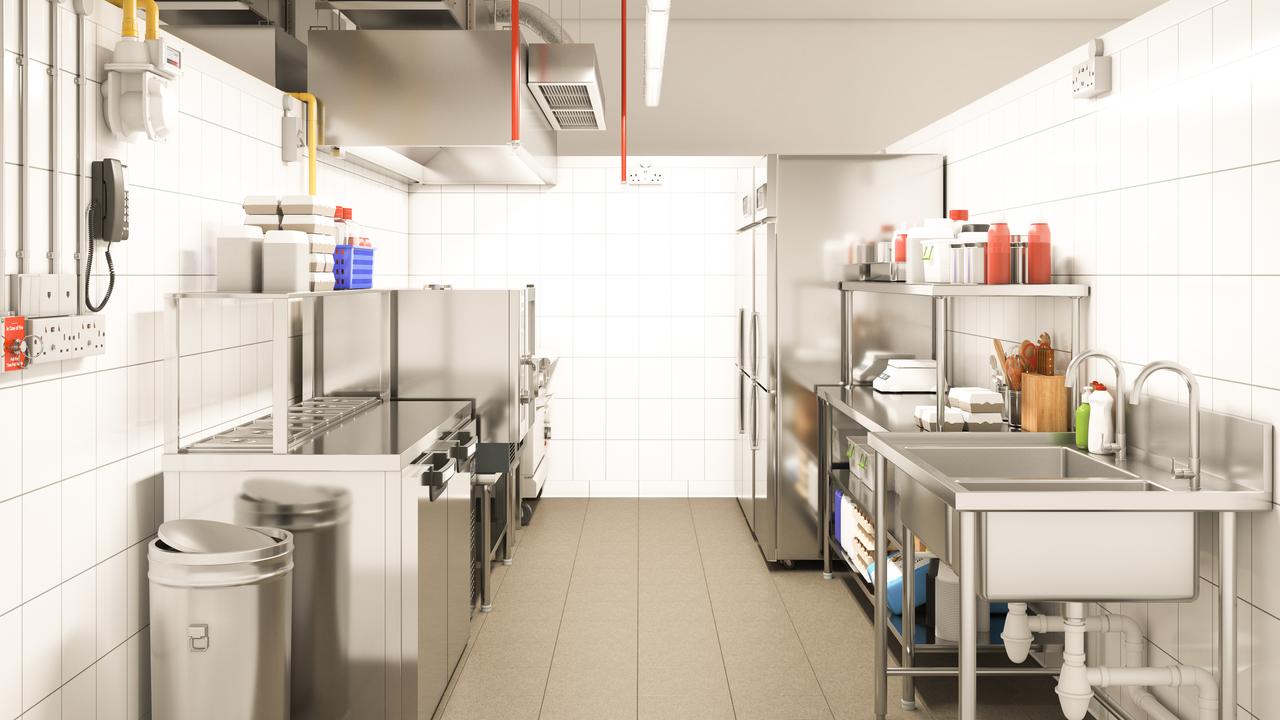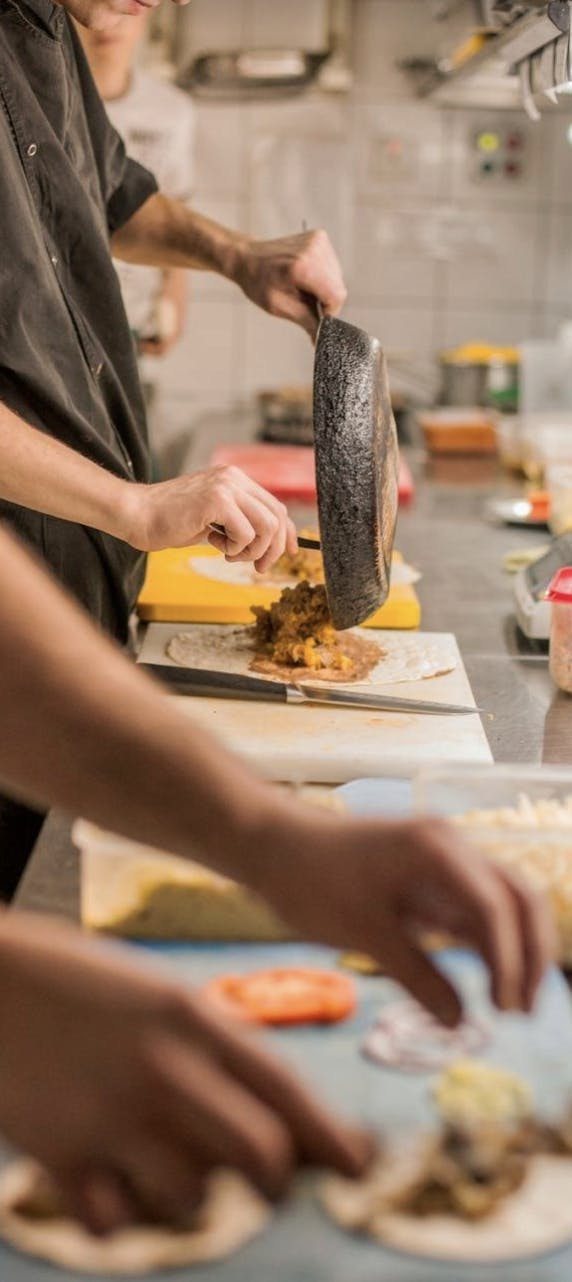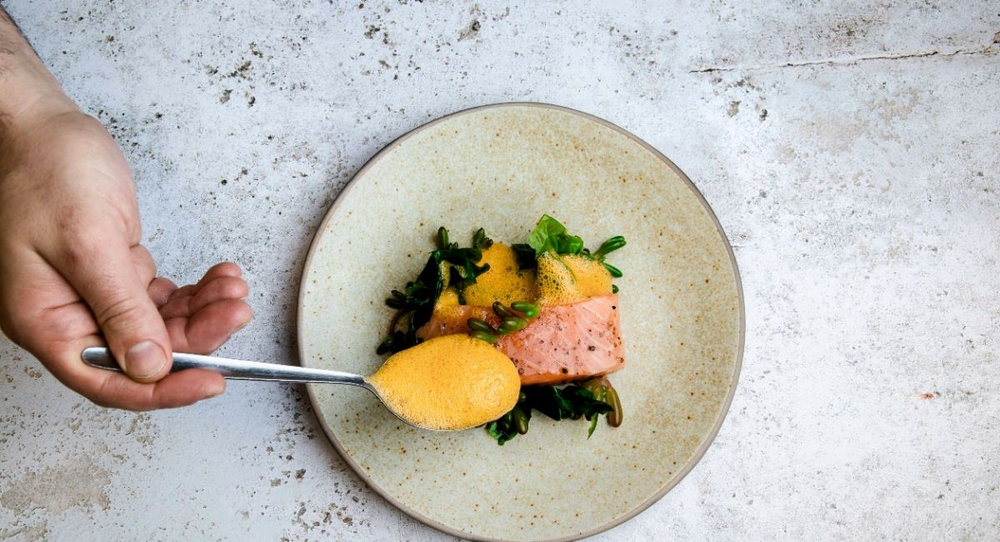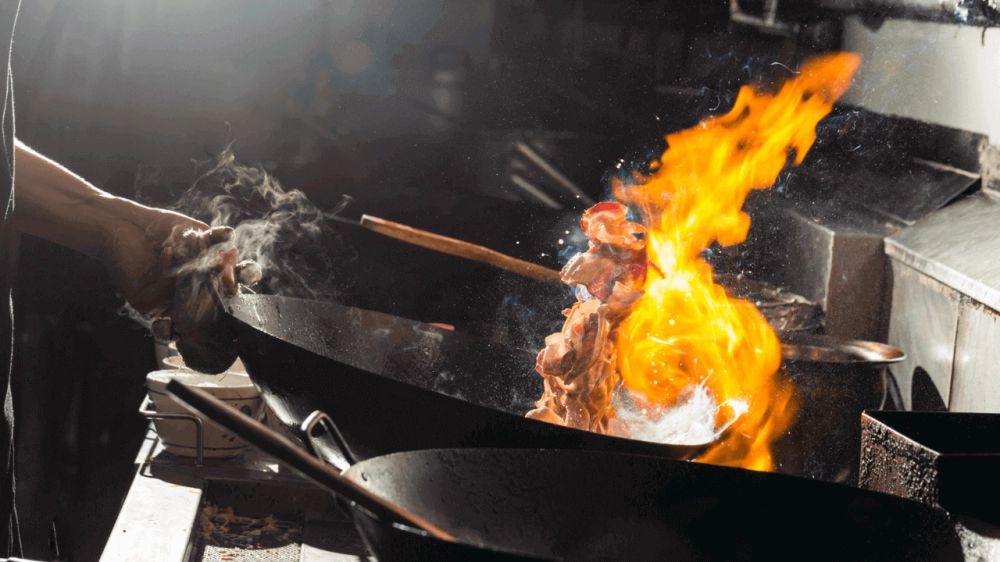How to Write a Restaurant Business Plan: 11 Essential Steps
Table of Contents
CloudKitchens
How many tacos can be delivered from a 1000sqft restaurant?
The same amount as a 200sqft ghost kitchen.

In many ways, a restaurant business plan is like a detailed recipe. But instead of listing ingredients and cooking methods, a restaurant business plan provides aspiring restaurant owners an overview of their proposed establishment—and it’s as crucial as a dish’s final dash of salt.
However, writing a strong restaurant business plan can be confusing. That’s why we’re here.
By diving into how to write a restaurant business plan, we’ll discuss the detailed information you should include so you know how to start a restaurant business successfully. That way, your business plan can be as well-built as your famous chicken club—if not as tasty. So, put on your apron, pick up your pen, and let’s get to work.
What is a restaurant business plan?
Nearly all new businesses need a business plan. That’s because a business plan details a business’s structure, operation, finances, marketing strategies, and more. Without this, your business may have difficulty attracting investors. A weak plan may even prevent you from obtaining the necessary licenses and permits.
A restaurant’s business plan is no exception. In fact, a restaurant’s business plan may be even more important than plans for other business types. That’s because restaurants are especially liable to fail within their first year.
According to some estimates, 30% of restaurants fail during their initial 12 months.
While a carefully considered plan alone may not help you stay afloat, a bad one can sink you faster than a vegetable in a pickling jar.
What to include in a restaurant business plan
Regardless of the business’s type, most business plans include the following:
- An executive summary
- A company description
- A market analysis
- A marketing strategy
- A financial strategy
In addition to these common sections, restaurant business plans typically include:
Let’s unpack each of these sections in more detail.
1. Executive summary
Although the executive summary is normally at the top of restaurant business plans, it may be the last section you write. That’s because your executive summary summarizes what’s included in your restaurant business plan. In doing so, an executive summary functions like a book’s introduction, letting readers know exactly what to expect.
Writing a compelling, yet informative, executive summary is just as important as setting the right temperature on your sous vide. When investors are crunched for time, your executive summary may be the only section they read. As a result, your executive summary should be:
- Concise
- Informative
- Well-written
When writing your executive summary, aim to include:
- Your concept
- How you intend to execute your concept
- An overview of costs and benefits
- Your expected profit margin
2. Company overview
Your company overview should be longer than your executive summary. Depending on the amount of detail you wish to include, your company overview may span several pages.
This is where you’ll describe your restaurant. Here are a few items to include in your company overview:
- The restaurant’s name
- The restaurant’s backstory
- The restaurant’s management structure
- Your goals and objectives
- Your food and concept
You should also include the location of your restaurant and any legal information about franchising and trademarking. Finally, it may be worthwhile to list your background as a restaurateur and your cooking experience.
3. Market analysis
A marketing plan, or industry analysis, looks at the market forces surrounding a new restaurant. This section is important because opening a new restaurant in an area with low demand or stiff competition could spell trouble. As a result, a strong market research analysis typically focuses on:
- The restaurant’s competition
- The state of the local restaurant industry
- The average revenue of similar restaurants
- The average rate of restaurant closures in the area
- The eating habits of the prospective customer base
You might also want to note current and expected meat and produce costs.
4. Marketing strategy
Before the internet changed the marketing landscape, many restaurants relied on word-of-mouth, radio, and newspapers to promote their eateries. Now, restaurant management teams have a wide range of marketing strategies—from billboards to social media accounts.
Providing an overview of your marketing strategy can help you set your budget. It can also keep you focused on the marketing strategies that work best for your target clientele. In addition to detailing how you’ll promote your restaurant, your marketing strategy might also discuss:
- Meal discounts
- Special promotions
- Community events
- In-kind donations
- Partnerships
5. Financial Strategy
So, how much does it cost to start a restaurant business? Restaurants aren’t typically built on spare change. In fact, according to some estimates, the average restaurant startup cost is upwards of $250,000—and that’s just the initial investment.
Anyone who has ever worked in a restaurant knows that even fine-dining restaurants experience occasional equipment malfunctions. Some restaurants also have exorbitant food costs. As a result, knowing how you’ll pay for these expenses before they mount can give you peace of mind.
Your financial analysis should carefully outline the following:
- Potential investors
- Operating costs
- Equipment costs
- Employee costs
Your financial strategy might also include how you’ll save on expenses. For example, you could potentially minimize your upfront kitchen costs by opting for a ghost kitchen. Thus, your financial strategy could reflect how the ghost kitchen will impact your operating costs.
6. Regulatory & Compliance Plan
The Regulatory & Compliance Plan explains how the restaurant meets all legal and regulatory requirements. It shows that the business is prepared to operate without legal risks, fines, or forced shutdowns, which is critical for investors and local authorities.
This section includes required licenses and registrations such as a business license, food service permit, sales tax registration, and, if applicable, a liquor license. It also covers health and food safety regulations, health inspections, zoning laws, and accessibility requirements under the Americans with Disabilities Act (ADA).
The plan should also address labor compliance, including minimum wage laws, overtime, tip credit rules, workers’ compensation, and OSHA requirements.
Clear compliance processes protect operations and ensure long-term business continuity.
7. Menu overview
Your menu overview section might be the most exciting section you write. After all, your menu is often the focal point of your restaurant.
That said, your menu need not be totally complete. Instead, you can start menu engineering with just a general idea of your food and beverage concept. When constructing your sample menu overview section, consider the following:
- Restaurant logos
- An overview of the types of service
- Potential prices of each menu item
- A preliminary design
Once you have a firmer grasp of your menu’s general direction, you can tinker with it as your restaurant concept continues to grow.
8. Operational Plan (Front & Back of House)
The Operational Plan explains how the restaurant operates on a daily basis, translating strategy into execution. This section is critical because investors, lenders, and landlords assess whether the operation is efficient, scalable, and aligned with local cost structures, especially labor and rent.
The Front of House (FOH) covers all customer-facing activities, including service flow, order management, wait times, dine-in experience, takeout, and delivery integration.
Key decisions include service model selection, POS usage, queue management, tipping structure, and service standards that meet US consumer expectations.
The Back of House (BOH) focuses on production efficiency and cost control. It includes kitchen layout, prep workflows, inventory management, food safety standards, staff training, and waste reduction. A well-designed BOH improves consistency, protects margins, and supports higher volume without sacrificing quality.
This plan should also define standard operating procedures (SOPs) such as opening and closing routines, quality control, supplier receiving, and peak-hour management.
9. Design Plan
Your restaurant’s layout can be just as important as your menu. Do you envision a central dining room flanked by smaller dining rooms? Do you prefer mostly two-top tables or community-style tables? Using your business plan to think through your restaurant idea’s design can help you budget for tables and chairs accordingly. It can also help you plan light fixtures and table decorations.
The best design plans may also include kitchen layouts. Since a successful restaurant’s efficiency is largely measured by its kitchen’s efficiency, a well-designed layout can boost productivity. When considering your kitchen’s layout and equipment, think about the following:
- Ovens and ranges
- Freezer space
- Dishwashing equipment
- Shelves and storage
- Office space
- Prep and hand sinks
10. Location assessment
Similar to a market analysis, a location assessment measures the profitability of your restaurant based on its area. However, its focus is different from that of a market analysis.
Instead of analyzing larger industry forces like supply and demand, location assessments look at the particular characteristics of a restaurant’s environment. These characteristics include:
- Available parking
- Population density
- Foot traffic
- Urban development
- Future zoning regulations
- Average rent
Location assessments can be particularly useful for restaurants in underdeveloped areas. They can give you an idea of an area’s expected growth or decline.
11. Employee plan
Finally, an employee plan is a valuable element to add to your restaurant business plan template. In short, an employee plan anticipates your staffing needs. A sample employee plan might include the following:
- Staffing needs
- Shifts and hours
- Back-of-house jobs
- Front-of-house jobs
- Employee pay
- Tip policy
The last two items are especially important. Will your employees collect individual tips, or will tips be pooled? Will gratuity already be included in the guest’s checks? Furthermore, will all employees be paid an hourly wage, or will some employees be salaried?
Your plan might also discuss how you’ll advertise jobs, your onboarding requirements, and your restaurant’s required training.
How to present a completed business plan
A recipe may contain the ingredients to make an elaborate French sandwich. But if you don’t present the sandwich right, it may just look like a regular old ham on rye. The same principle applies to business plans.
In short, designing and presenting your business plan effectively is the best way to attract potential investors. Here are a few ways to make your business plan stand out:
- Include charts and pictures: Many people have said that the “eye takes the first bite.” While this adage applies to the way food looks on the plate, it can also apply to the way restaurant concepts are presented. Charts and pictures can help potential investors visualize your concepts more fully.
- Use a template: Business plan templates have made many restaurateurs’ lives easier. That’s because these templates can enhance the presentation of information. That said, don’t be hemmed in by a template. If your restaurant defies simple categorization, it may be helpful to take a more creative approach.
- Be confident in your plan: You’ve done most of the heavy lifting by completing your business plan. Now, it’s time to be confident in your delivery. Review your plan thoroughly to anticipate any questions.
Plan your restaurant with CloudKitchens
Writing a restaurant business plan can be more time-intensive than making a risotto.
Fortunately, CloudKitchens can help take a few things off your plate—especially kitchen design, so you can start thinking about restaurant expansion opportunities.
Our ghost kitchens come equipped with commercial hoods, hand sinks, prep sinks, and gas points. As a result, you could spend less time thinking about how you’ll design your kitchen space and more time using it.
You’ve spent a lot of time writing your business plan. With CloudKitchens, you can finally get back to cooking. Now that’s delicious.
Explore ghost kitchen locations across the US:
- Ghost kitchens in San Francisco
- Ghost kitchens in LA
- Ghost kitchens in NYC
- Ghost Kitchens in Toronto
- Ghost Kitchens in Atlanta
- Ghost Kitchens in Dallas
- Ghost Kitchens in Chicago
- Ghost Kitchens in Denver
- Ghost Kitchens in Miami
| DISCLAIMER: This information is provided for general informational purposes only and the content does not constitute an endorsement. CloudKitchens does not warrant the accuracy or completeness of any information, text, images/graphics, links, or other content contained within the blog content. We recommend that you consult with financial, legal, and business professionals for advice specific to your situation. |
Sources:
Eat. How to Write a Restaurant Business Plan (Step-by-Step Guide with Samples). https://restaurant.eatapp.co/blog/restaurant-business-plan
On the Line. What is the Restaurant Failure Rate? https://pos.toasttab.com/blog/on-the-line/restaurant-failure-rate#:~:text=The%20restaurant%20failure%20rate%20is,t%20survive%20their%20first%20year
Sage. How much does it cost to open a restaurant? https://www.sage.com/en-us/accounting-software/startup-costs/restaurant/
More insights & stories
There’s more where that came from.
Get in the know and check out our additional insights



